Quick Links: About Us - Contact Us
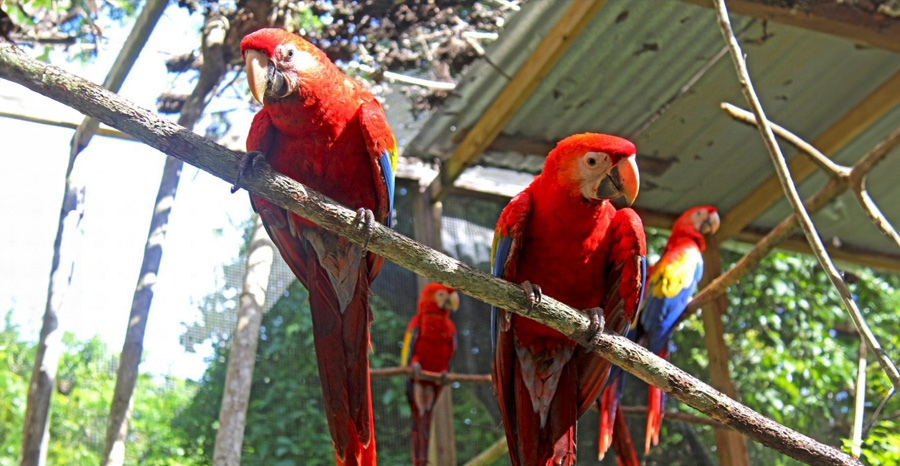
If you’re a nature lover with a soft spot for colorful feathers and tropical calls, Belize in July is your kind of paradise. With over 600 species of birds, including the magnificent scarlet macaws and the vibrant keel-billed toucan, this Central American gem transforms into a birdwatcher’s dream during the summer rains.
While July is technically the “green season,” that just means the forests are bursting with life, perfect conditions for spotting Belize’s most iconic birds. From remote rainforest reserves to quiet birding villages, here’s your complete guide to the best places to see macaws and toucans in Belize this July.
Where to Spot Scarlet Macaws in July
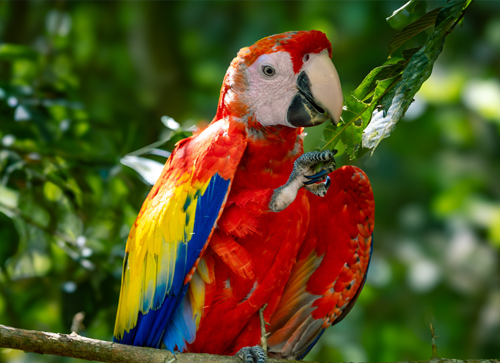
1. Red Bank Village (Stann Creek District)
Red Bank is one of the few places in Belize where large groups of scarlet macaws gather during specific times of the year. In July, some macaws remain in the area as others move between feeding and nesting sites. With its proximity to the Maya Mountains, this quiet village offers a peaceful birding experience, best enjoyed early in the morning.
Local villagers often act as guides and offer insights into the best observation spots along the riverbanks. These community-led tours help support conservation and provide authentic connections to the land.
“There’s nothing quite like seeing those red wings flash across the jungle sky at sunrise,” says Thomas Reyes, a local birding guide from the area.
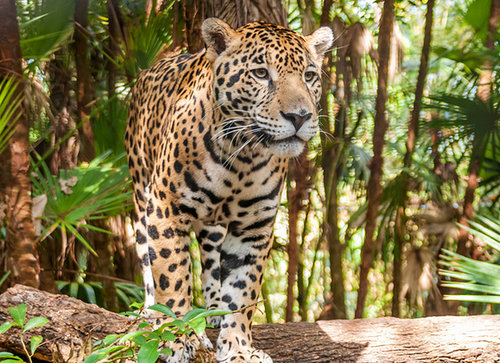
2. Cockscomb Basin Wildlife Sanctuary
Known more widely for its jaguar conservation program, Cockscomb also shelters a remarkable array of bird species. The dense forest trails are ideal for spotting scarlet macaws feeding on wild fruits and nuts in July.
- Tip: Try the Tiger Fern Trail for a high chance of macaw sightings and panoramic views of the jungle canopy.
- Bonus: You may also hear howler monkeys and see motmots, tanagers, and parakeets.
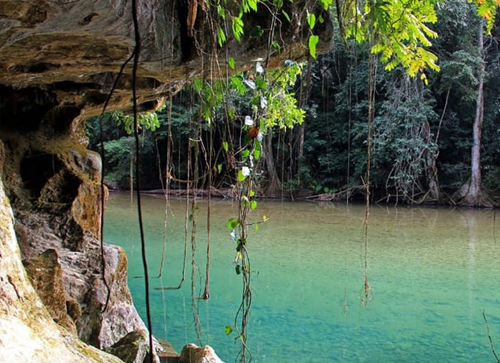
3. Bladen Nature Reserve (Toledo District)
A little harder to access, Bladen is part of Belize’s most pristine rainforest system. It’s an untouched paradise where macaws thrive. While official tours are limited (due to the protected status of the reserve), some eco-lodges in the area offer birding expeditions along the outer edges.
If you’re an adventurous traveler, this is where you’ll hear nothing but the forest—and maybe a pair of scarlet macaws calling to each other across the valley.
Where to Find Toucans in July
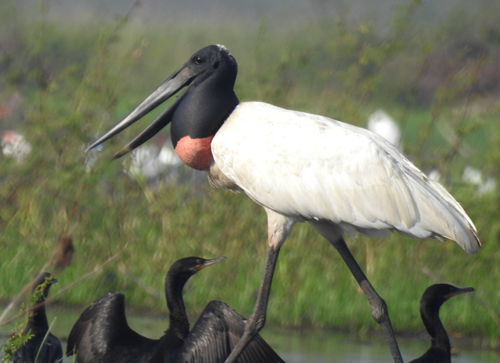
1. Crooked Tree Wildlife Sanctuary (Belize District)
This RAMSAR wetland site is a favorite for birders year-round, but July is especially lush. The keel-billed toucan, Belize’s national bird, is a regular here. You’ll also see jacanas, herons, snail kites, and parrots among the lagoons and lowland forests.
Take a guided boat tour through the sanctuary in the early morning hours, when the birds are most active and the skies are alive with calls.
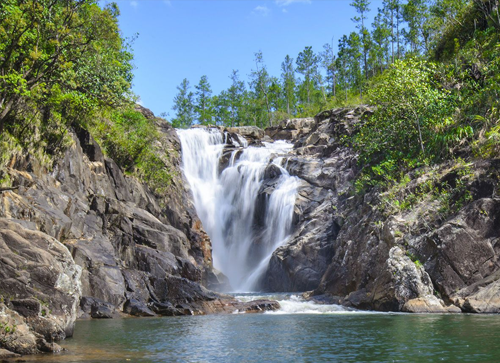
2. Mountain Pine Ridge Forest Reserve
At higher altitudes and cooler temperatures, Mountain Pine Ridge offers a completely different birding experience. Toucans are often seen near fruiting trees and along trails that wind past waterfalls and granite outcrops.
- Best trails: Rio Frio Cave and Hidden Valley Falls
- Stay at: Hidden Valley Inn—an eco-lodge that offers guided birding hikes
Don’t let the name fool you—it’s not all pine. Broadleaf forests and mixed habitats make this one of the best places to see both forest and mountain bird species, including toucans, trogons, and flycatchers.
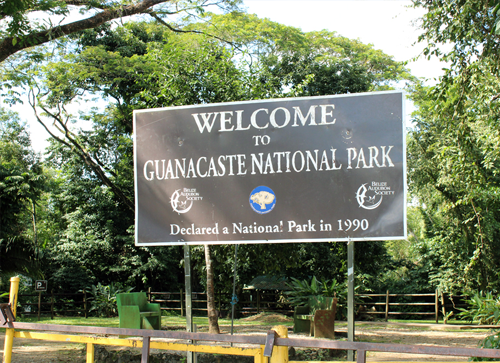
3. Guanacaste National Park (Near Belmopan)
For a quick, beginner-friendly birdwatching stop, Guanacaste Park is just minutes from Belize’s capital. It’s compact but dense with birdlife. The well-marked trails are perfect for spotting toucans in the treetops and learning about Belize’s native flora.
If you’re an adventurous traveler, this is where you’ll hear nothing but the forest—and maybe a pair of scarlet macaws calling to each other across the valley.
- Bonus: The visitor center provides educational materials and bird ID cards for families and new birders.
Why Belize in July Is a Birdwatcher’s Dream
While some travelers avoid July due to light rain, experienced nature lovers know this is when the country comes to life. The rain refreshes the forests, fruits ripen, and birds flock to feed, nest, and socialize.
July’s off-peak tourism also means fewer crowds, more availability at eco-lodges, and intimate wildlife encounters.
And Belize’s dedication to conservation, spearheaded by organizations like the Belize Audubon Society, means these pristine environments remain safe for birds and birders alike.
Birding Tours and Eco-Lodges to Book
Here are some highly-rated options for bird-focused adventures and accommodations:
Recommended Birding Tours:
- TIDE Tours (Toledo) – Explore protected areas in southern Belize with experienced naturalists
- Birds Eye View Lodge (Crooked Tree) – Offers boat and walking birding tours
- Belize Raptor Center (San Ignacio area) – Focused on education and rehabilitation
Eco-Lodges to Stay At:
- Hidden Valley Inn – Offers tailored birding packages and private forest trails
- Black Rock Lodge – Popular with nature photographers and birders
- Crooked Tree Lodge – Great for families and wetland birdwatching
Look for eco-certifications, sustainable practices, and tour guides trained in ornithology when choosing your tour.
Tips for Spotting Macaws and Toucans in the Wild
- Go early: Birds are most active at dawn, especially before the heat builds.
- Bring binoculars (8×42 or better) and a good zoom camera
- Wear muted colors and closed-toe shoes
- Bring a small waterproof bag—July’s rains can surprise you!
- Stay quiet and patient. Sometimes, the birds find you.
Respect the wildlife and always follow your guide’s lead—keeping distance helps preserve natural behavior and reduces stress on the animals.
Final Thoughts: A Feathered Adventure Worth Taking
Seeing a scarlet macaw burst through the jungle canopy or watching a toucan hop between branches in the early morning mist isn’t just a photo opportunity—it’s a moment of awe that stays with you.
In July, Belize offers travelers a front-row seat to one of nature’s most colorful shows. Whether you’re a serious birder or a first-time explorer, you’ll find wonder in every flutter, call, and rustle of the rainforest.
Ready to plan your trip? Check out our Belize travel tips, eco-lodge guides, and upcoming birding tours right here.


